Ariadna Ramonetti, Fernando García-Dory, Mauricio Corbalan, Alejandro Alonso
Reading time: 14 minutes

13.08.2018
Fernando García Dory talks with Ariadna Ramonetti, Mauricio Corbalán and Alex Alonso, about the importance of rethinking artistic practices and contemporary cultural production as a necessary action of resistance against the dispossession and excessive violation of the territory.

Autonomy and Territory. Reappropriation of Knowledge in the Face of Internal Colonialism
In 1968, while students in Paris or Berkley claimed that there was “beneath the pavement, the beach,” [1] for most Latin Americans the issue was obtaining land. In the discourse on and aesthetics of ecocriticism and the emancipation of the material foundations of existence, the reinvention of new, direct forms of resource-management was and remains a pending issue. At the heart of the possible relations for caring for an agroecosystem, it may not only be possible to experiment with different forms of economy, but also with other social and political models, other cultural expressions. How can we, at present, reflect on this problem of territory—territory not only as the custody of affective networks and cares/crops, but as the basis of autonomy and the sovereignty over life—as a way of exerting biopower. How can our current cultural production work hand in hand with communities for the defense of territories?
We started a conversation about the spoliation and exploitation of lands with cultural interlocutors from both sides of the Atlantic. The aim was to identify the processes through which these neocolonial endeavors continue to exert themselves in the framework of the Global South and possible ways of resisting them.
INLAND – Campo Adentro is a collaboration platform that links global and local cultural production with agrarian production by means of a reproducible, self-sustained, post-contemporary-art system, which incorporates actions such as the composition of different forms of knowledge, extension pedagogies, aesthetic experimentation, and the establishment of practice-communities in the field.

In 2017, Campo Adentro and fluent (a space for indie art in Cantabria, northern Spain, directed by Alex Alonso) began to collaborate on a project embedded in the region that attempted to develop forms of artistic research with locals, thereby reshaping power relations between the center and the periphery.
That same year, they initiated a collaboration with Islario, a publication directed by Ariadna Ramonetti in Mexico, to further explore neo-extractivism and ecologies of decolonization. This collaboration would develop into several exhibitions, which would trace a trajectory of visual cultures of materialism and present-day capitalism, and of forms of resistance and identities that are being shaped by these forces, such as the new indigenism stemming from the Standing Rock actions, Andean popular governments, the Sami people, and possible climate and sociopolitical futures.
In late 2017, the MALBA (Museo de Arte Latinoamericano de Buenos Aires) invited INLAND and the M7Red collective to work with different local agents to imagine new futures for the Argentinian countryside based on the complex current situation there. M7Red is a project that celebrates the countryside as an independent ecosystem of thoughts and critical practices, including a more extensive cosmology of communities with dissident and intertwined ways of life.
The aim of this conversation was to create a series of interdependent relationships, which are necessary to assert the potential independence of rural knowledges.

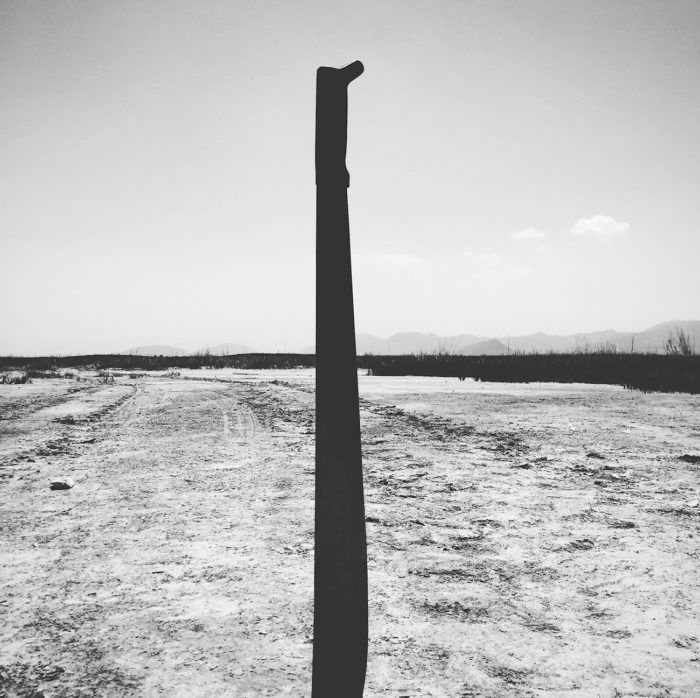
Fernando García Dory: Ariadna, you chose to do your research on a community’s struggle for its territory, in this case Texcoco. You decided to take a stance as a researcher and engage in a social process in the field, something that is not common in academic research. Have you found bridges between both realities? Do you consider it possible to contribute to these processes as a cultural producer?
Ariadna Ramonetti: For all of 2016 and part of 2017, I worked with farmers and small landowners in Atenco and Texcoco. These farmers have gathered in a regional social movement called Frente de Pueblos en Defensa de la Tierra (FPDT) [The Peoples’ Front for the Defense of the Land]. Since 2001, they have been fighting against the construction of the NAICM [2] on their lands. I got involved on several levels, and sided with the Frente’s argument: it is an attack on nature to let a lake—a nonhuman subject—die in order to replace it with an airport, which is a structure that clearly threatens and undermines the rights of the communities that live there to the land, to the water, and to free transit across their own territory. To answer your question, and also thinking from the perspective of the field of cultural production: during the time I spent in the countryside, the only way I was able to create a bridge between the Frente and my own position as an ethnographer was to simply be with them, helping and talking with them. I think it is possible to contribute to this resistance if you have the disposition and time to support them and promote their cause in a way that will have longterm repercussions. This can take the shape of a work, a publication, or some kind of visual memory that contributes to the spread of the different causes that are participating in the struggle against extractivism, spoliation, economic violence, and displacement.
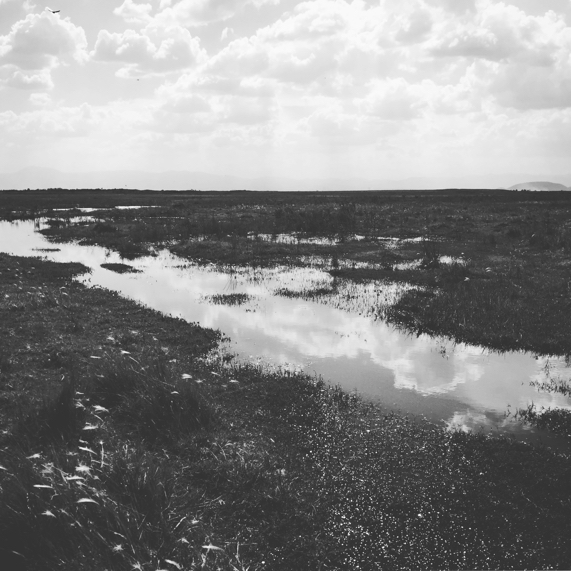
FGD: This is where the idea of Islario began, if I am not mistaken. In the two volumes of the magazine you’ve published so far, you create a platform that gives this issue a broader scope. On the one hand, it triggers a debate on how these developmental models aggress the environment and its inhabitants, and, on the other, it reaches out to and connects similar cases across Latin America. Which agressions are you collecting, and what is your analysis of the current situation in the region?
AR: The first phase of the airport’s construction has been deeply aggressive towards the environment. The building of its foundations requires the complete draining of Lake Texcoco, which spreads over more than 4,000 hectares. To execute this process, they implemented a preload system with a volcanic rock called tezontle. Its porosity is supposed to absorb the remaining water from the lake. In order to do this, around 20 million m3 tezontle rocks are being extracted from practically all the surrounding hills. These new “mines” are being exploited by local “chiefs” and guarded by armed gangs, as is common in other regions of Northeast Mexico. Even if the corporations that are building the airport are not mining companies, they do have an extractive and geological place of enunciation, based on the destruction of life forms and the upsetting of social reproduction on a given territory.
It took me several months of research to understand what I just briefly delineated for you. During the process, I realized that the information regarding the spoliation of land came almost exclusively from Brazilian, Chilean, and Argentinian academic and scientific worlds. This is why I began to publish Islario in late 2016, to render visible these neocolonial processes of extraction—of both natural and cultural resources—from the perspective of other fields such as the visual arts, ethnography, research journalism, and heritage studies. Its aim is not only to spread information about social conflicts involving water, land, and territorial spoliation, it also seeks to create an archive for the future and to help expand discussions about other issues associated with these conflicts, including internal colonialism, migration, marginalization, economic violence, and the role that both material and immaterial heritage play in the construction of official discourses of identity. What motivates transnational corporations and what is left of the nation states to seize the identity, the individual and collective property, the culture, the ritual and quotidian spaces, and the most basic means of survival from entire communities of people, both rural and urban, when it will result in their inevitable and forced displacement? In contrast to other places in Latin America like Peru or Chile where eviction is mostly carried out by mining companies, in Mexico it is the State with its infrastructure projects that displaces communities. Thus, it is the State that is plundering its own citizens.
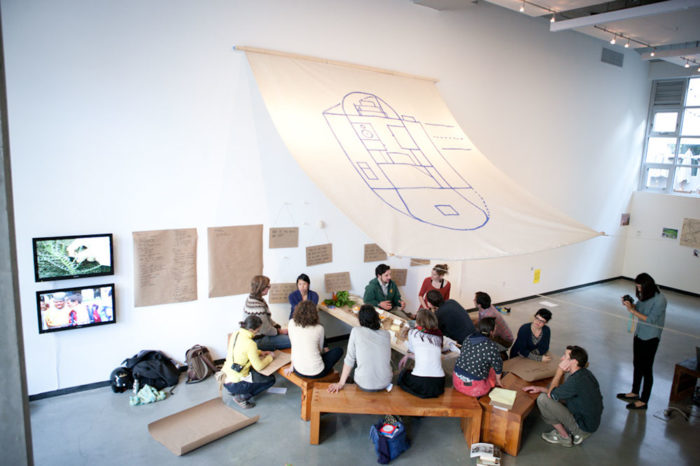
FGD: Mauricio, with M7Red in Argentina, you have engaged in the construction of a new architecture of knowledge that helps to elucidate abuses of power and apply legal research to the conditions in which these abuses have been carried out in our so-called democracies. By focusing on the information produced by local people in the areas affected by the extractivist soybean industry and its concomitant pack of agrochemicals, you have founded a kind of post-normal science and aided in the reappropriation of fiscal and judicial labor by farming communities. Is this, in your opinion, a kind of reappropriation, a submission, or a possible way to reach independence from systems of knowledge sanctioned by the established powers?
Mauricio Corbalán: There is an alliance between the biotechnological industry, academic and scientific activity, and the media, which has reshaped the Argentinian territory in the last two decades. This is what Jorge Rulli and the GRR (Grupo de Reflexión Rural) [Rural Reflection Group] have called the “model of biotechnological occupation” of the nation. Villages and small cities that have been trapped in zones of geneticaly modified soybean production or large-scale mining have begun to confront this alliance. Those who have been affected resist on a local level by self-organizing into discussion forums. In these local discussions, they question the production of knowledge itself and how best to collectively carry out research protocols, acknowledging the conflict between science and democracy that governments deny.
When the technological package of genetically modified soybeans appeared in the late 1990s, several “consensus conferences” were held, creating the basis for the Secretaría de Ciencia Ciudadana, [Ministry of Civic Science] which existed briefly before the 2001 crisis. We want to reconstruct this history in our research. It started with Daniel Goldstein’s scientific journalism in the sixties, and was continued with the works of Silvio Funtowicz and Jerome Ravetz in the eighties. A genealogy of “science for the people,” as it was called in the sixties counterculture, and would eventually become post-normal science: a protocol to explore complex scenarios involving experts and non-experts. Due to the lack of state politics based on the “precautionary principle,” the forums convened by those affected themselves enable open source spatial research with legal tools, and produce evidence in order to advocate for modifications in current legislation. Yet, what these local struggles have shed light on is the complicity between state researchers and the biotechnology companies. This relates to the criticism of systems of production, distribution, and publication of academic science data on a global scale. How and who defines the agendas for public research? This is crucial, because what is at stake is the occupation of the territory.

FGD: And also a possible epistemologic liberation, a-academic and civic, which reminds me of agroecology’s acknowledgment of peasant knowledges. Most of the peri-urban villages and communities in which you have been working in Argentina do not include indigenous populations, and they also rarely include farmers, as opposed to other Latin American countries. Do you think that despite this there are links with the land that go beyond the Western notion of property and NIMBY environmental complaints? Are you following the rebirth of Mapuche resistance and their alliance with civic movements? Could there be a question of a re-signification of identity in these movements of the dispossessed that are now surging up in response to the aggressions of neoliberal developmentalism? I am thinking about a phenomenon that could be taking place in the anti-extractivist struggles in the US, a country which is not very different from Argentina in its history and in terms of ethnic and social composition.
MC: In the soybean production area, the population is mostly derived from Europeans who were brought in to colonize the humid pampas and who now find themselves trapped within the frontiers of agrobusiness. Bolivian immigrants are predominant in the peri-urban agricultural outskirts of the metropolitan areas, which produce vegetables on a massive scale. They have to resist urbanizing pressure placed upon their rented lands. Those who migrated from the countryside because of the expansion of soybean production joined with the populations that settled irregularly on the urban hinterlands and participate in a subsistence economy and in a complex system of subsidies.
In Patagonia, the expansion of the extractive model and its ensuing violence on territories and populations, such as the Mapuche, have caused some local resistance, but there is still no sign of any collaborative relationship with environmental justice policies or initiatives promoted from the urban centers, despite the fact that some urban peripheries are involved in the Mapuche mobilization. The Chilean and Argentinian governments and the media manipulate these conflicts to create the image of a potential domestic enemy. They have even started to coordinate joint security protocols with radically repressive actions. It is here that art is important, as the conceptual elaboration of a cognitive-cultural resistance. Part of the effect of the current conservative policies of Macri include the fact that the Ministry of Science and Technology has begun to isolate many of the activist groups that hinder the development of agribusiness and mining industries all over the country. They call them “fundamentalists” and claim that they prevent Argentina from fully inserting itself into the global supply network. We believe that legal mechanisms such as the “rights of nature” (see Bolivia) can be key to bringing local conflicts to a global level and deconstructing the binary between the countryside and the city that feeds this urbanization of territory through new internal borders; the urban borders lacking services, and the nature “reserves” and the land occupied for extraction.
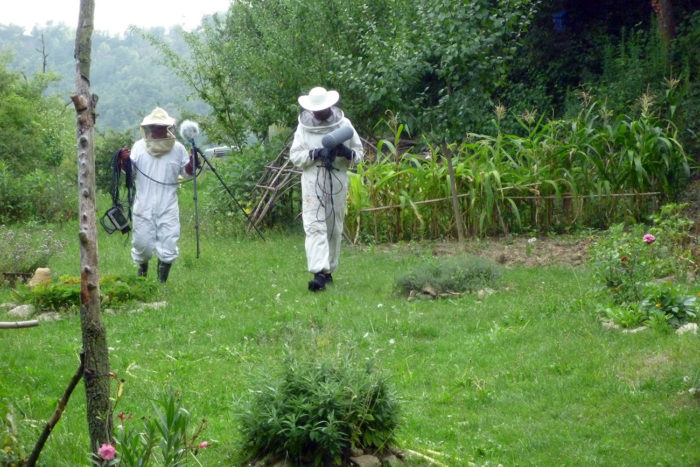
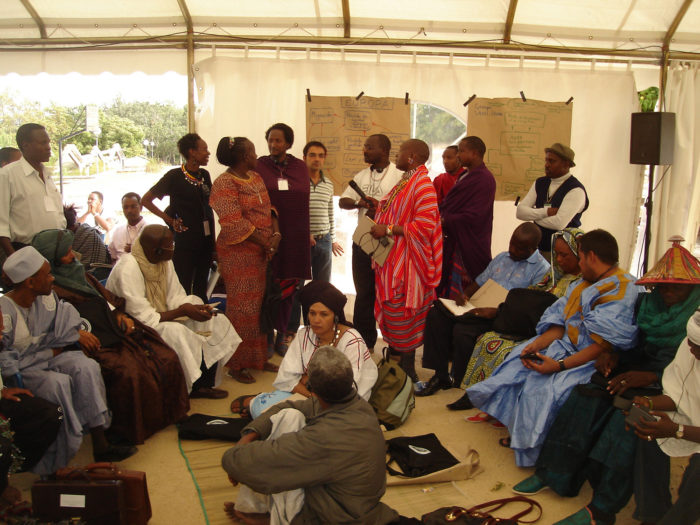
FGD: Let us continue with this thought by looking at the work of fluent, the independent art space in Santander (Spain). Their goal is to activate places that are apparently outside the well-known circuit, and to center the 2017 program, titled Into Pore Spaces / Aesthetics of Contamination, on the analysis of our relationship with the concept of “nature.” Has the process of rethinking the role of land changed anything in these decisions? How do you think that artistic practice and contemporary cultural production can reflect on and engage with the ecological crisis?
Alex Alonso: To work from a geography beyond the circuits you mention has to do with linking established forms of knowledge with all those other non-academic and (not necessarily) linguistic knowledges, which, in my opinion, have not communicated as much as they should. In this sense, while thinking about the program of Aesthetics of Contamination, it was important to base it on a direct experience of nature, and not so much on the theory regarding this concept, with artistic practices linked to experience, from installation or performance to collaborative and disruptive processes in the field, such as those you carry out with INLAND.
It is truly necessary to connect the humanities, especially the arts, with the fight to defend rural knowledge and the knowledge of those who live in or work with nature. In the academic field, this need is beginning to show through the fascinating proliferation of the so-called “Environmental Humanities.” As Ariadna was saying, the spoliation processes stem from a displacement of identity, constructed on an ideology that has internalized the notion that the natural environment and nonhuman entities are passive, exploitable elements. This is why it is so important to strengthen the consciousness of interdependence. Even if in the cultural field references to decolonization from anthropocentric, extractivist, and capitalist knowledges are expanding, it is fundamentally necessary to establish spaces of thought directly linked to the land. These will allow for the de-objectification of what is being studied, enabling a direct experience of ecological discourse, and the creation of a field of action and engagement with non-academic knowledge, such as the much-maligned peasant knowledge.
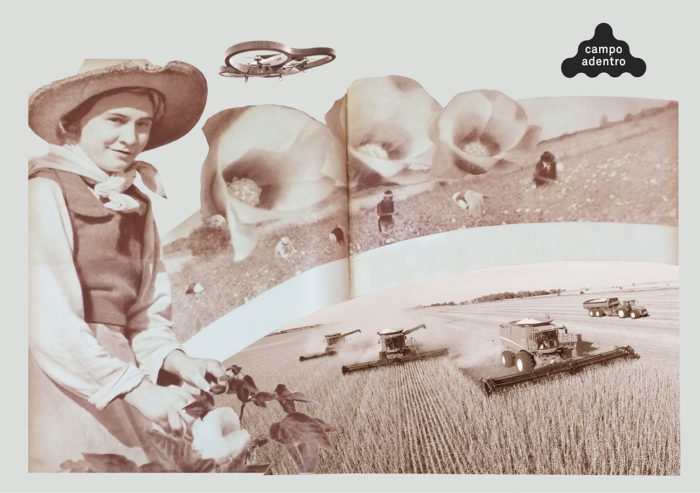
FGD: In a certain way, this idea guided the premise of the Escuela de Pastores project, begun in 2004. What does a year of work with INLAND in Cantabria entail in relation to the questions of territorial in/dependence?
AA: The first phase of INLAND Cantabria involves an extension of the work that was already carried out on the Asturian and Leonese sides of the Picos de Europa. This natural park is a particular ecosystem that has served as a border between three provinces which share environmental, social, and cultural identities. It is a territory that has trans-border autonomy, a bioregion. After our initial investigation, paying careful attention to historical references and the current population’s visions for the land, we established the foundational premise. We determined that the plans for the area’s development had thus far been imagined and implemented by elites and technocrats alien to the region. These have caused the rise and fall of the dairy industry, of tourism, and of forest management. A moment of apparent decline saw the emergence of initiatives to rescue and update important aspects of rural cultural heritage, such as neighborhood councils that rule over communal decisions. This assessment, publicized through the projection of an audiovisual essay in late 2017, reveals a preoccupation with the ongoing mentorship from urban centers, with its inadequate attention to agricultural and territorial politics (both by the state and by Europe) and its fetishization of nature that has resulted from the neo-ruralism encouraged by tourism. It also reveals the possibility of escaping the standardizations imposed by capital and the capacity to claim territorial independence, away from nationalism, through local forms of geopower.
A community capable of asserting these premises could potentially create an autonomous space: this region is a valley of territorial dynamics and shifting development models which still feature vernacular, pre-capitalist communal management models. The process through which these socioeconomic models have turned into precarious and even marginal lifestyles has triggered the capacity to create a small community of resistance, through associative processes and initiatives that claim the need to regenerate the system (from environmental activism to science and culture). If we look at the advanced self-governed localities in Latin America, we could determine the political and economic dimensions from which a model of resistance could be imagined, one that could enable territorial sustainability that could extend to a global scale.
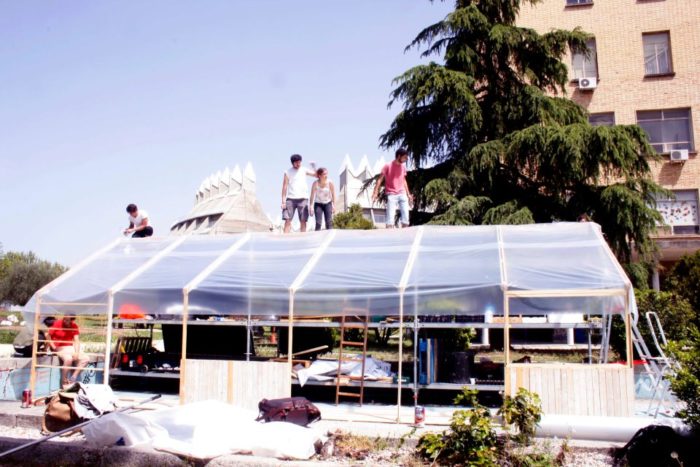
—
[1] “Beneath the pavement, the beach” or “the beach beneath the street” was a slogan popularized among student protestors in Paris in 1968. The term derives from the sand that was found under cobblestones the students dug up during riots and used to throw at police. Edwin Heatchote, “The Beach Beneath the Streets,” Financial Times, August 12, 2011.
[2] Acronym for New International Airport of Mexico City. To learn more, see Islario’s Facebook page.
Comments
There are no coments available.